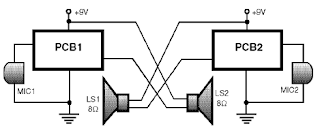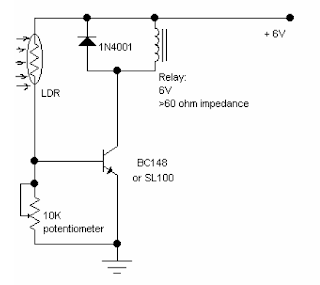Several circuits for constructing FM
transmitters have been published
in EFY. The power output of most
of these circuits were very low because
no power amplifier stages were incorporated.
The transmitter circuit described here
has an extra RF power amplifier stage,
after the oscillator stage, to raise the
power output to 200-250 milliwatts. With
a good matching 50-ohm ground—plane
antenna or multi-element Yagi antenna,
this transmitter can provide reasonably
good signal strength up to a distance of
about 2 kilometres.
The circuit built around transistor
T1 (BF494) is a basic low-power variable-
frequency VHF oscillator. A varicap
diode circuit is included to change the frequency
of the transmitter and to provide
frequency modulation by audio signals.
The output of the oscillator is about 50
milliwatts. Transistor T2 (2N3866) forms
a VHF-class A power amplifier. It boosts
the oscillator signals’ power four to five
times. Thus, 200-250 milliwatts of power
is generated at the collector of transistor
T2.
For better results, assemble the circuit
on a good-quality glass epoxy board and
house the transmitter inside an aluminium
case. Shield the oscillator stage using
an aluminium sheet.
Coil winding details are given below:
L1 – 4 turns of 20 SWG wire close
wound over 8mm diameter plastic
former.
L2 – 2 turns of 24 SWG wire near top
end of L1.
(Note: No core (i.e. air core) is used for
the above coils)
L3 – 7 turns of 24 SWG wire close
wound with 3mm diameter air core.
L4 – 7 turns of 24 SWG wire-wound on
a ferrite bead (as choke)
Potentiometer VR1 is used to set the
centre frequency whereas potentiometer
VR2 is used for power control. For humfree
operation, operate the transmitter
on a 12V rechargeable battery pack of
10 x 1.2-volt Ni-Cd cells. Transistor T2
must be mounted on a heat sink. Do
not switch on the transmitter without
a matching antenna. Adjust both trimmers
(VC1 and VC2) for maximum
transmission power. Adjust potentiometer
VR1 to set the centre frequency
near 100 MHz.
This transmitter should only be used
for educational purposes. Regular transmission
using such a transmitter without
a licence is illegal in India.





















